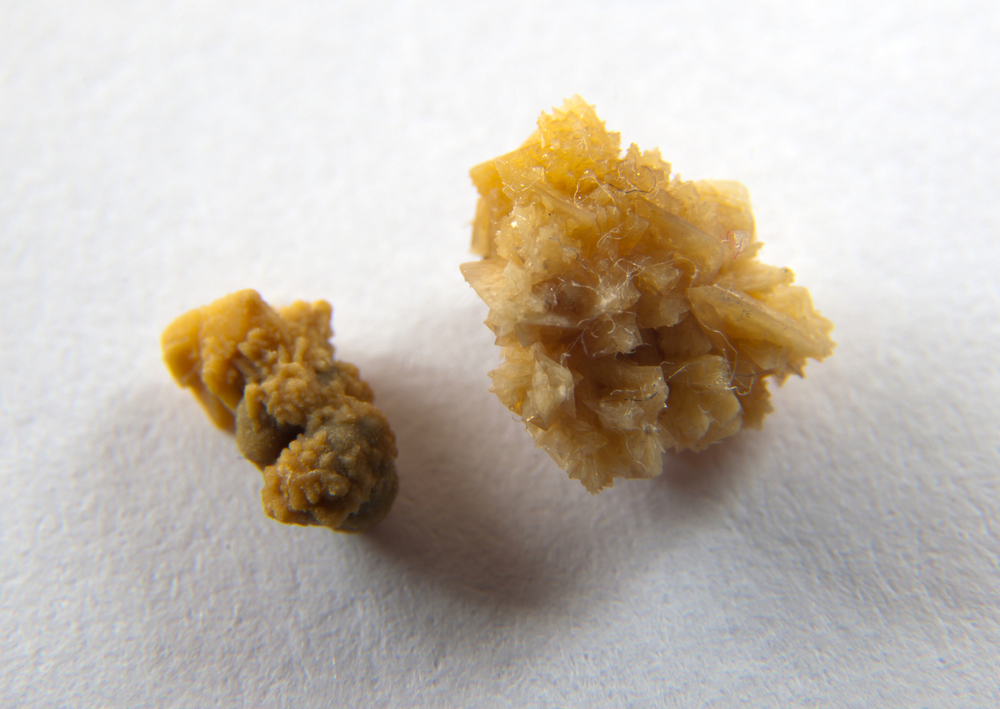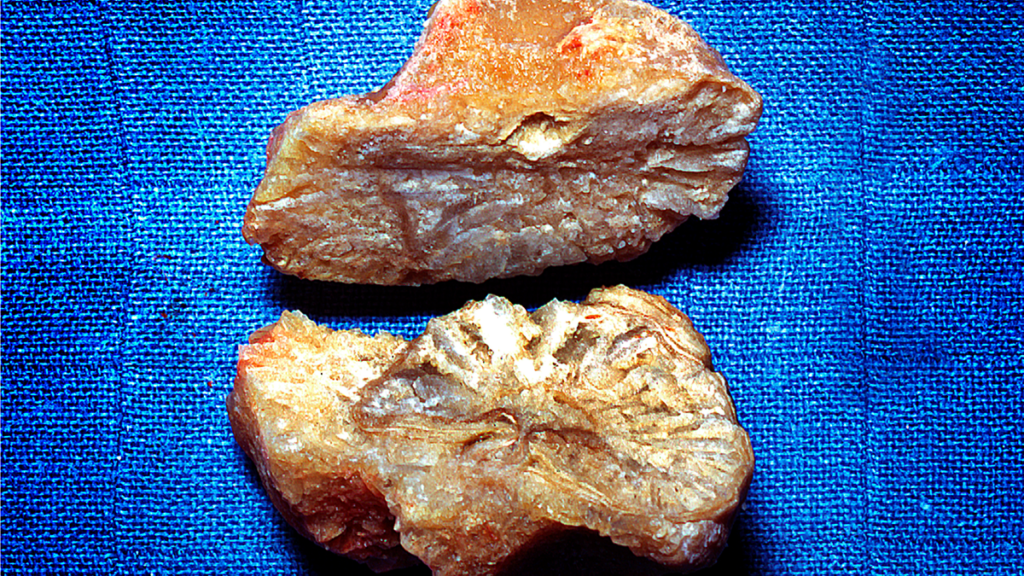Have you ever heard the phrase “sharp pains in the side”? Ugh! Kidney stones, those tiny mineral deposits causing chaos in your urinary tract, are famous for triggering that. But beyond the excruciating pain, there’s a lot to learn about kidney stones—what sparks their formation, how to identify them, and most importantly, how to get rid of them. Let’s delve into the world of kidney stones and explore everything you need to know about these little troublemakers.
What Are Kidney Stones?
Kidney stones, according to the National Institute of Diabetes and Digestive and Kidney Diseases, are tiny but tough. These “hard, pebble-like pieces of material” form in your kidneys due to concentrated minerals in your urine. They can also show up anywhere along your urinary tract, causing trouble from your bladder to your urethra. The size and type of these stones determine how much discomfort they bring. Smaller ones might pass unnoticed, while larger ones can trigger severe pain and even require medical attention to avoid complications.
kidney stone symptoms
Kidney stones are equal opportunity offenders when it comes to size and pain. While small stones might be sneaky ninjas going unnoticed altogether, larger ones can unleash discomfort. The most common kidney stone symptom is severe pain in your lower back, abdomen, side, or even groin. Blood in your urine, nausea, and vomiting can also join the party as your body wrestles with the stone’s presence. You might notice changes in your urination, too, like feeling the urge to pee frequently or having difficulty going at all, all while experiencing pain or burning. These are all classic kidney stone symptoms. If fever or chills appear on top of it all, it’s best to see a doctor immediately, as these could signal an infection.
Types of Kidney Stones
There are different types of kidney stones, and various reasons and sources can cause them. Below are some famous types of kidney stones caused by other things.
Calcium Stones
When it comes to kidney stones, calcium takes center stage. The most common culprit is the calcium oxalate stone, formed from calcium and oxalate, a substance in certain foods. Spinach, peanuts, chocolate, and other nuts can contribute to oxalate buildup, potentially leading to these painful stones.

Uric Acid Stones
Not all kidney stones are created equal. The second most common type, uric acid stones, thrive in acidic urine. This can happen due to conditions like gout, diabetes, or obesity. To make matters worse, certain foods can worsen the problem. Think fish, shellfish, and meat—all delicious, but unfortunately, they can contribute to uric acid stone formation.

Struvite Stones
Less frequent, but still worth knowing about, are struvite stones. Unlike the others, they prefer an alkaline environment, the opposite of uric acid stones. These form when urine loses its acidity, often due to frequent UTIs or kidney infections. The good news is that treating these infections can help prevent struvite stones from showing up in the first place.

Cystine Stones
Cystine stones are the rarest of the bunch. Unlike others caused by diet or imbalances, these form from a genetic condition called cystinuria. People with this condition have a problem with an amino acid called cystine, which leaks from their kidneys and clumps in their urine, forming these uncommon stones.

Causes of Kidney Stones
Kidney stones aren’t all created equal, and the culprit behind their formation depends on the stone itself. The common thread? High levels of specific minerals in your urine. Calcium, oxalate, and phosphorus are usually harmless at normal levels, but when they get too concentrated, they can come together and form painful stones. This mineral build-up can be influenced by your diet, especially if you’re prone to kidney stones or have a history of them. So, watching your intake of certain foods and drinks might be vital in preventing these troublemakers.
Risk factors in kidney stone
Kidney stones don’t discriminate – anyone can develop them. But certain factors can increase your risk. A family or personal history of kidney stones is a red flag. I have an example where my uncle had kidney stones, and after some time, my elder brother was also caught in claws of kidney stones. Men are more prone than women, and dehydration is a primary culprit. Digestive diseases and some surgeries like gastric bypass can also increase your risk. Diet plays a role, too – too much protein, salt, or sugar can lead you to form stones. And certain medical conditions like cystinuria or frequent UTIs can make you more susceptible. If you’re worried about kidney stones, talk to your doctor. Early detection and treatment can help prevent these painful stones from forming in the first place, or if they do develop, they can be addressed with various kidney stone treatment options depending on the severity and type of stone.
How Are Kidney Stones Diagnosed?
Diagnosing a kidney stone involves a two-pronged approach. First, a doctor will do a physical exam and ask about your health history. Blood tests might be needed to check your mineral levels. Then, imaging tests like X-rays, ultrasounds, or CT scans will be used to visualize your urinary tract and identify any blockages caused by the stone. Sometimes, your doctor might even ask you to catch the passed stone for analysis to determine its type and plan the best course of treatment.
When To Seek Medical Attention
Kidney stones can be sneaky. Sometimes, they’re small enough to pass independently without causing trouble. But if you experience a symphony of pain in your lower back or side or notice blood in your urine, don’t hesitate to seek medical attention. Early diagnosis and intervention can make a big difference in managing these painful stones.
How long does it take to pass a kidney stone?
The wait for a kidney stone to pass can be agonizing, but the good news is some small stones are sneaky ninjas and might pass unnoticed in just a few days. But for larger ones, the journey can take weeks. It all depends on the size, location, and when it’s detected. The stones must travel a long road – from the kidney, down the ureter tube, into the bladder, and finally out through the urethra. The most intense pain usually happens while the stone navigates the narrow ureter. Once it reaches the bladder, things generally calm down. So, how long does it take to pass a kidney stone? In general, expect a week or two, but some stubborn stones can take up to three weeks. If your unwelcome guest hasn’t exited after four weeks, your doctor might recommend surgery to remove it.
Kidney stone treatment
Fortunately, there are options for battling kidney stones. Kidney stone treatment can involve:
- Flushing out the stone with increased fluids.
- Managing the pain with medication.
- Even performing surgery for larger or more stubborn rocks.
Passing The Stone Naturally
When someone has kidney stones, the first and foremost approach is to naturally pass the kidney stones by themselves. In this technique, 6 to 8 glasses of water are recommended for a day to increase the process of urination and to move the stone from its place.
Pain Management
When you have kidney stones, you have to face a storm of pain, and this pain might feel like a killing stab. To reduce this pain and minimize its effect, physicians may recommend some medication. Heating pads and taking a hot bath can also reduce the pain.
Lithotripsy
Lithotripsy is a standard method to remove kidney stones; in this method, shockwaves are used to break the large kidney stones into smaller ones so they can pass through the urinary tract without any big problems. This process can be uncomfortable and painful, so little anesthesia can be given.
Ureteroscopy
Sometimes, it happens when the stone gets stuck in the ureter or bladder, and it becomes painful and difficult to move or remove the stone. In this situation, healthcare professionals can perform Ureteroscopy. A small camera is inserted into the ureter or bladder with a wire attachment. A small l cage is used to capture the stone from that device.
Complications From Kidney Stones
Kidney stones pass quickly from the urinary tract with little aid, but sometimes, it becomes difficult to remove them. If proper care is not given, then kidney stones can result in complications;
- The problem is known as hematuria, in which bleeding occurs in urination
- It can cause urinary tract infections (UTIs)
- Severe pain while urination due to blockage by stone and preventing urination
- It can also result in kidney dysfunction
Ways To Prevent Kidney Stones
Kidney stones might be challenging, but preventing them doesn’t have to be. Here are some ways to take charge: Drink up! Water is your best friend, helping to flush out minerals that could form stones. Pile on the fruits and veggies; their natural goodness can help reduce urine acidity. Go easy on the salt; too much sodium can contribute to stone formation. Consider reducing animal protein; it can increase uric acid levels. If you’re prone to calcium oxalate stones, limit certain foods like spinach and nuts. But don’t ditch calcium entirely; getting enough from dairy can prevent stones by binding with oxalate before reaching your kidneys. Talk to your doctor about the right amount for you.
In some cases, medication might be helpful. There are options for preventing uric acid and calcium and promoting a less acidic urine environment. Remember, preventing these painful stones is always better than dealing with them later!
FAQs
Are Kidney Stones Common?
Kidney stones are a relatively common problem in the USA as they can affect 10 to 15% of people in the USA, and 1 out of 10 people is facing this problem.
Can Kidney Stones Be Prevented?
Some standard techniques can help you prevent common kidney stones, like proper water intake and healthy diet maintenance. Also, keep in mind that genetics, gender and medical conditions can cause kidney stones.
Are Kidney Stones Serious?
Kidney stones are usually treated quickly, but if it is not treated well and not enough care is given, they will result in severe health conditions like pain, kidney failure and UTIs. So do not leave it unseen. If you face a little problem with urination and feel pain in the kidney, then you should seek medical help.
Will the ER remove my Kidney Stone?
The fate of a kidney stone depends on its size and temperament. Small stones might be little troublemakers, sneaking out independently with a nudge from increased fluids. However, emergency responders may need to take action for larger, more stubborn stones causing a blockage. Techniques like lithotripsy can pulverize the stone, while ureteroscopy allows for a surgical retrieval mission.


